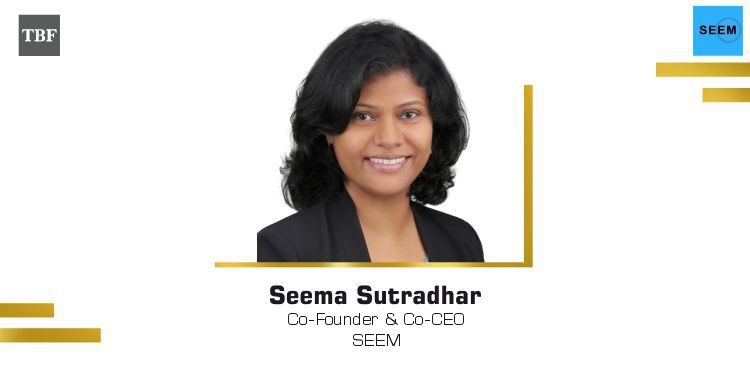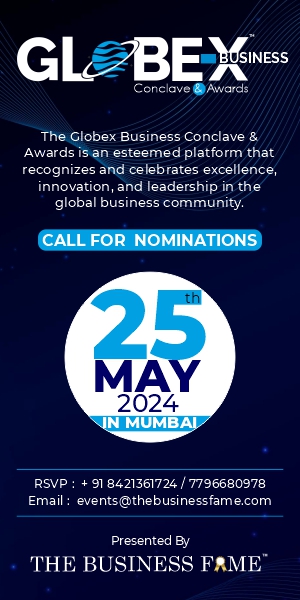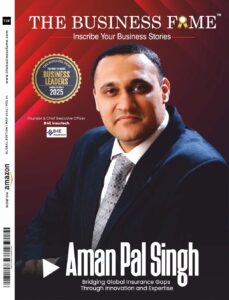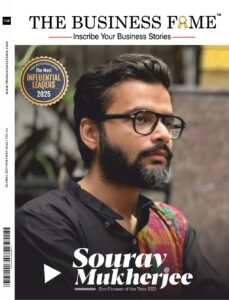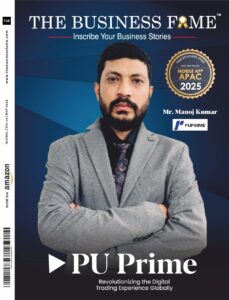SEEM believes that the Financial system has the responsibility and power to steer the economy in a direction that is environment friendly, inclusive and sustainable for the long term. While doing so, they will solve not only the climate issues but also many other bigger challenges the world faces today. The sustainable development goals are achievable when the investor community, the investee and the entire supply chain transforms and becomes long-term focused. They have a purpose beyond just making a profit. The business entities disclose meaningful and comparable data on ESG aspects and the Financial Institutes capture data accurately and authentically, use that data in meaningful and transparent ways to measure businesses creditworthiness including both ESG and financial aspects of their performance, comply with all regulations and respond to their business needs with agility.
“SEEM is transforming Financial system as well as large businesses independent of their industry and making them sustainable for the long-term.”
What led to founding of SEEM?
As an internal process consultant with larger IT systems integrators, Seema observed that people resisted processes. Although when explained to them the risk, they were happy to come up with a solution on their own that met the intent.
“I realised that people knew best how to solve a problem. They disliked being told how to solve it.”
It was common sense, and the same is true with kids too. This was the core to her discovery of “Change through Movement”. Later on, there were different issues, like difficulty aligning with certain objectives. It was not about the quality of deliverables but somewhere a disjoint on intent.
This made Seema think harder – how could we be in alignment more happily? A situation where everyone gives their best, feels motivated and is willing to go the extra mile. She discovered that it happens in moments where people are doing things for others. A service that has an impact on others and where they are truly engaged in it.
“I realised this was the bigger purpose, beyond making a profit and has some impact on real people.”
Such a purpose unites people, and there are no disjoint intents, and people participate enthusiastically, wholeheartedly. Finally, having worked in software application development and at the forefront with users, Seema had experience solving problems through computer applications. She observed how computers could bring transparency, simplicity, thoughtful control, and of course efficiency.
“There is enormous power in computing that can be harnessed to our benefit. This desire to use computing powers and technological advancements to solve bigger problems persuaded me to include cloud computing, CRM / BPM & AI as part of the application ideation.”
She aimed to solve the big problem of enabling corporate and investments banks to deliver towards their purpose by simplifying their challenges in complying with regulations. Such an application would enable quantification of credit and compliance risk at a discrete level using AI, thereby bringing more transparency and consistency in risk measurement for any decision-making process.
The application will solve all data silo challenges and incorporate ESG metrics in measuring the creditworthiness of businesses. It will bring agility in addressing business requirements and also create an MIS system for the whole bank.
The Products and Services –
There are three products of SEEM :
Transformation Methodology “Change thru Movement” –
The organisation transformation methodology is for the Financial System and Large businesses in any sector. It underpins the organisation has a purpose beyond just making a profit. It results in innovation, culture shift, digital transformation and projects that deliver towards the Sustainable Developments Goals SDGs. The other businesses offering this service could be from Management Consulting firms like Accenture, Deloitte, Bain & Co, IBM etc.
Although they all recognise the power of Purpose in organisations yet they do not have a repeatable transformation methodology that is anywhere comparable to what SEEM has. The uniqueness of Change thru Movement is that it becomes a beautiful change, and people are driving it by choice. It becomes a movement within the organisation, demonstrates high employee engagement, and delivers outstanding results towards the organisation’s Purpose and SDGs.
The self-initiated projects simply change the culture within the organisation, and people start taking risks showing all the entrepreneurial skill sets. Innovation becomes the way of life. It solves problems and steers the business toward a win-win proposition across all stakeholders of the companies, including employees, suppliers, customers, society, planet and, of course, shareholders.
Profit is not impacted by Purpose. The organisation not only makes a profit at the same or improved levels but also becomes sustainable over a very long period of time, thereby attaining sustainability in true form. This also means sustainability of the fine balance in nature that is so badly impacted by human activity today.
Universal ESG Metrics:
This is the second offering from SEEM. ESG metrics are the measurements towards the Environmental, Social and Governance aspects of an organisation’s performance. These are the non-financial measurements. While the current ESG metrics standards from different bodies focus on quantitative measures, SEEM has a different outlook.
“We knew it is not possible to deliver ESG metrics unless the organisation undergoes a transformation journey.”
This is because no one was talking of ESG measurements as late as, say, at the start of Covid 19. All disclosures and standards were only focused on financial numbers. So to bring the focus to ESG aspects of a business’s performance, they needed to transform and shift their outlook towards organisational Purpose first. Only which will result in appreciable and authentic ESG numbers that the businesses could disclose.
SEEM’s Change thru Movement (CTM) transformation methodology is doing exactly that. It takes the organisation through a journey of transformation that underpins the organisation has a purpose beyond just making a profit. It results in innovation, culture shift, digital transformation and projects that deliver towards the purpose of the organisation which also means towards one or more of the 17 SDGs. Hence measuring the quality of transformation is a great assessment of the organisation’s progress towards ESG aspects. The added advantage is that it becomes universal in nature as it measures the quality of the process and not a quantitative value alone that always differ from industry to industry. These universal ESG metrics have the quantitative measurements normalised and then wrapped inside them.
The new standard-setting board International Sustainability Standards Board (ISSB) appointed by the IFRS Foundation Trustees on 3 November 2021, is working to deliver a comprehensive global baseline of sustainability-related disclosure standards that provide investors and other capital market participants with information about companies’ sustainability-related risks and opportunities to help them make informed decisions. The board was formed as a result of a calling by International investors with global investment portfolios for high quality, transparent, reliable and comparable reporting by companies on climate and other environmental, social and governance (ESG) matters.
Currently reporting entities define their own governance model around sustainability-related risks and opportunities. They come up with a strategy for the management of those risks and opportunities. They develop the definition and targets of the metrics being reported. At the centre of the entire process is the identification of sustainability related risks and opportunities and their management. This makes the system non-standard as these risks and opportunities will differ across businesses and industries. An open and non-standard methodology and set of metrics defeat the option for their comparability. To solve this problem SEEM’s Change thru Movement (CTM) transformation methodology focuses on the ESG aspects more meaningfully, effectively and allows comparability. The methodology has a governance model embedded inside it. The difference is the management philosophy which is not of Command and Control. The philosophy in CTM is of believing in people, giving them purpose and letting them innovate – Engage, Empower & Mobilise. Some of the requirements in the model used by different standards are meaningful only in Command and Control type of management processes where the goal is already known for each task. But it is not possible in case of something new that is to be created. Innovation requires space and that space cannot be already defined by specific goals, risks and tasks. Yet the journey of innovation would have processes and controls but somewhat different. Without a governance model no methodology is meaningful. CTM is able to bring forth the needed governance within a management philosophy that promotes entrepreneurial culture. Thus a standard methodology across businesses and across sectors is available that can be measured for the quality of its deployment. Further to this the outcome metrics can be easily normalised for comparability.
For the investment community to make informed decisions on ESG aspects, they are using the sustainability ratings of organisations awarded by the various rating agencies like Moody’s, S&P Global, Fitch Ratings etc. Keeping aside how these ratings are arrived at, the universal ESG metrics generated by CTM would empower the community to make informed decisions using these universal metrics directly.
Currently at multiple fronts including the G7 & G20 level, task-force led focused work is in progress in the same area.
regTech product “Compliance by Design”:
It is the third offering from SEEM. It focuses on the corporate and investment banks and enables them to deliver towards their purpose more powerfully by solving their challenges in complying with regulations. It measures credit risk and compliance risk at a discrete level using AI. It embeds it into a cloud-based CRM BPM application making compliance considerations a default way of doing business. Accurate and transparent measurements of risk shift the bank’s culture and make it much more risk-focused in an authentic way.
It also acts as an MIS system for the bank, enables agile response to business requirements and incorporates universal ESG metrics in evaluating the creditworthiness of businesses, among many other benefits. At the core, it solves the challenges of data silos so prevalent in such banks that restrict their performance and growth in the right direction.
When looking for a comparable product in the market, there are products offered by Avanade, WolterKluwer, LSEG etc. Still, they serve only a part of the compliance universe, whereas “Compliance by Design” encompasses every aspect of the compliance world the bank needs to respond to. The universal ESG metrics are part of this application and use them to measure businesses’ creditworthiness at a uniform scale. The application uses a proprietary methodology for AI models development resulting in high standards of predictions made by these models. The application is integrated across the bank and all geographies.
With these three products, SEEM is transforming the financial system and large businesses independent of their industry and making them sustainable for the long term. SEEM’s mission is to create an ecosystem that nurtures businesses to thrive, grow and become sustainable for the future.

